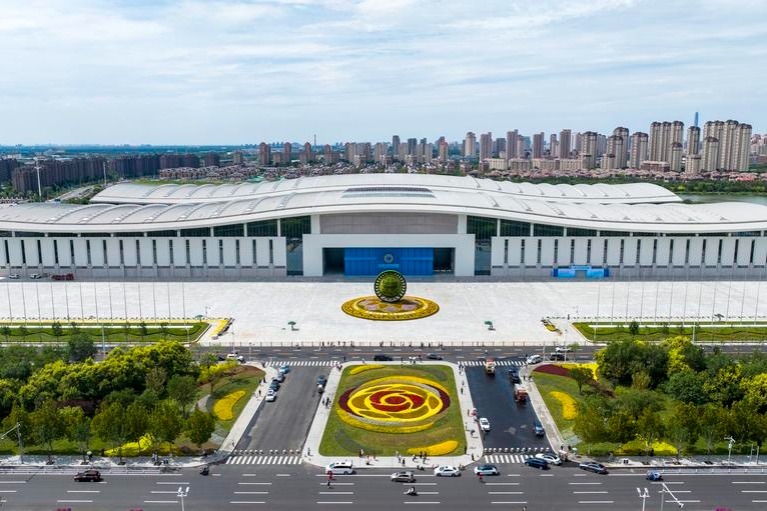Spending power


Enabling migrant workers to become permanent urban residents key to boosting economic growth
China is moving toward negative population growth, and the size of working-age population is set to shrink at a faster rate, which will aggravate the labor shortage, and drive down the potential economic growth rate. To address the worsening aging problem, China needs to take more drastic reform measures to boost its economic growth.
The overall population decline will also have a major impact on the demand side since the shrinking population will lead on to less consumption, dragging economic growth.
Although the negative growth of the population is inevitable, some countermeasures can be taken to alleviate the impact it will have on the society and economy. The new-type of urbanization, of which the central task is to enable the large number of migrant workers to become urban residents, can help release this group's huge consumption potential, and raise productivity by transferring the rural labor force to non-agricultural sectors.
The country's demographic challenges also come from the rapidly aging population. Data released by the National Statistics Bureau in 2021 showed that China has shifted from an aging society, defined as the share of 65 and older above 7 percent, to an aged society, defined as the elderly's share being above 14 percent. According to estimates of the United Nations, China will enter a highly aged society defined as the elderly's share going beyond 21 percent around 2030.
It marks a new demographic infection point for China. Past experience suggests a demographic turning point will also be a turning point for economic development, and bring new challenges to the country's economy.
The negative growth of the population will deliver shocks to economic development on both the supply side and demand side.
In 2011, China already saw a demographic turning point, when the size of the working population, or people aged between 15 and 59, began declining, which pushed up the labor costs of enterprises, and eroded the country's comparative advantages in labor-intensive industries. Since then, the manufacturing sector's share in the Chinese economy has been on the decline and the contribution rate of exports to economic growth has dropped.
The decline in the number of new laborers has slowed the improvement of the quality of the labor force. And the shrinking labor pool has also propelled enterprises to replace human workers with capital and machines at a faster pace, which has led to diminishing returns for capital.
In addition, the decreasing labor force has resulted in a slower transfer of rural laborers to urban areas, dragging down the growth in productivity as the transfer of rural labor force to cities could optimize resource allocation.
All these factors together herald lower potential economic growth.
Facts have proved that China's real economic growth rate over the past decade has been hovering around the estimated potential growth rate: the decline of potential growth rate since 2011 was followed by the drop in real growth rate in subsequent years.
At the same time, the imminent new demographic turning point is expected to exert a bigger impact on the supply side. Since 2011, the country's working population has been shrinking in a steady manner, providing a buffer period. But the shrinking of the work force will accelerate once the total population starts decreasing, which will pose graver challenges to the economy.
Apart from slower potential economic growth, the demographic shift will also have a strong influence on the demand side.
Population growth is correlated with consumption since people are consumers. It is the so-called total population effect.
The income level of China's seniors is lower than that of the working-age population, and the country is still plagued by uneven distribution of and insufficiency in social security resources. The elderly in China have concerns when spending money: they worry about not only their own future, but also that of their children and grandchildren. Therefore, they are more reluctant to spend compared with younger people. This is the "age structure effect".
Despite the fact that a declining population is inevitable, the country can take steps to reduce the income gaps among different groups of people. Generally speaking, people with lower incomes are more inclined to spend their increased earnings on consumption compared with richer people.
Therefore, to optimize the income distribution and expand consumption demand, the challenge mainly comes from the consumption side. Striving for "common prosperity" and smoothing "domestic circulation "necessitate fostering a huge middle-income group, and thus forming a super-large domestic market.
One approach is to advance the people-centered urbanization, of which the primary task is to turn rural migrant workers into urban residents. It is an important source of reform dividends from the supply side and demand side. China's Gini coefficient stands at the alarmingly high level of 0.468, of which about half can be ascribed to the urban-rural income gap. And thus, to bridge the urban-rural divide will help narrow the overall income gap.
In addition, on the supply side, labor shortage is one key reason behind the decelerating economic growth. Although the working-age population is shrinking, China still has a large reserve of surplus rural labor.
China's population employed in agriculture accounts for 23 percent of the total labor force, much higher than the average level of many developed countries, which is 3 to 4 percent. As China approaches the threshold of a high-income nation, the country faces the challenge of absorbing about 20 percent of the labor force now making a living in agriculture into the urban economy. Therefore, China's labor shortage can be alleviated by transferring rural labor from the agricultural sector to non-farming sectors. And this shift from lower productivity sectors to higher productivity sectors will help raise the overall productivity of the economy.
Currently, the country's urbanization rate is 65 percent, but the share of people with permanent urban residence stands at only 47 percent. The majority of those living in cities with no permanent residence status are migrant workers and their families. To give them access to the same public services enjoyed by other urban residents will be a key challenge for China to unlock the huge consumption potential of the population.
The author is chief expert of the National High-end Think Tank at the Chinese Academy of Social Sciences and former vice-president of the Chinese Academy of Social Sciences. The author contributed this article to China Watch, a think tank powered by China Daily.


































